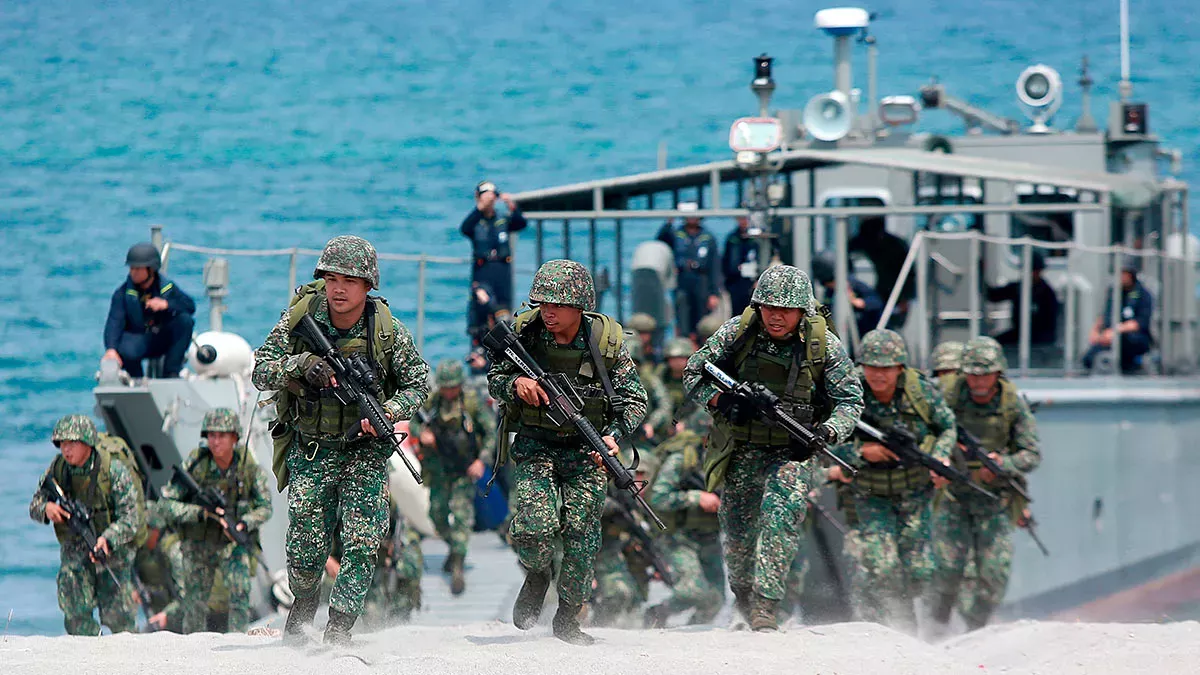China warns against Japan–Philippines military cooperation Asia-Pacific flashpoint
Geopolitical turbulence continues to intensify. This time, the hotspot of tension has emerged in the South China Sea — a strategically important segment of the Asia-Pacific region (APR). This once again confirms analytical forecasts about the progressing escalation of the situation surrounding the PRC. In particular, China has urged Japan to "draw lessons from history, exercise prudence in both words and actions regarding military and security matters." This is how the Chinese Ministry of Defence expressed itself against the backdrop of information about Tokyo’s plans to transfer six Abukuma-class frigates to the Philippines, equipped with anti-ship and anti-submarine missiles, torpedoes, and artillery.

The issue concerns Tokyo's recently revealed intention to transfer six decommissioned Japanese Abukuma-class escort destroyers to Manila for the needs of the Philippine Navy. According to the Philippine side, this deal will serve as an important element in the modernisation of the country’s armed forces and symbolises the deepening of strategic partnership with Japan.
Notably, this decision was announced on the first anniversary of the Japan–Philippines defence cooperation agreement.
In this context, the 2023 trilateral summit between the United States, Japan, and the Philippines also comes to mind, during which steps were discussed in response to “China’s attempts to unilaterally change the status quo in the region through force or coercion.” That same year, Manila granted the U.S. military access to four additional bases under the 2014 Enhanced Defence Cooperation Agreement (EDCA).
Against this backdrop, the recent statement by China’s Ministry of Defence — warning against the Japan–Philippines military cooperation being directed against third countries or harming their interests — appears quite predictable. The Chinese side emphasised that Japan, in recent years, has moved beyond the constraints of its pacifist constitution and the principle of an “exclusive defense-oriented principle,” ramping up arms and military equipment exports. In this regard, Beijing called on Tokyo to avoid introducing destabilising elements into the Asia-Pacific region’s security landscape.
The situation is further intensified by the recently signed reciprocal access agreement between Tokyo and Manila, which allows the deployment of military units on each other’s territory during joint exercises. Moreover, experts do not rule out the possibility that Japan may receive rotational access to Philippine military bases — similar to that granted to American forces.

Equally noteworthy were the Balikatan military exercises held in April–May 2025 on Philippine territory and in coastal areas, including zones adjacent to the South China Sea. In addition to the United States and the Philippines, Australia and France also took part, while Japan joined as one of the observer states. These manoeuvres were accompanied by public statements suggesting the possibility of rehearsing scenarios to block the Chinese Navy’s access to the Pacific Ocean through the international Miyako and Luzon straits.
In this context, the first overseas visit by newly appointed U.S. Secretary of Defense Peter Hegseth — in March, to the Philippines and Japan — was particularly symbolic. During the visit, an agreement was reached to demonstrate the latest NMESIS mobile coastal anti-ship missile systems, recently adopted by the Pentagon, during the Balikatan drills. As Hegseth noted on the eve of the exercises, these systems will enable the U.S. and the Philippines to effectively cooperate in “ensuring the protection of Philippine sovereignty.”
Thus, the Asia-Pacific region is gradually emerging as yet another potential flashpoint of global instability, against the backdrop of intensifying U.S.–China rivalry.

It comes as no surprise that during the Balikatan exercises, Beijing viewed U.S.–Philippine cooperation — including the deployment of the NMESIS system — as a factor contributing to heightened tensions in the Taiwan Strait.
Describing the drills as "provocative," China’s Ministry of Defence did not rule out the risk of growing military tensions in the region.
China views the Japan–Philippines military rapprochement in the same light. Adding further strain to the situation was Japan’s newly released annual defence report — the so-called White Paper. The document expresses Tokyo’s deep concern over China’s foreign policy actions, including the active military cooperation between Chinese and Russian armed forces. These developments, the report stresses, represent an “unprecedented strategic challenge to which Japan must respond with its full national strength and through cooperation with allies.”
At the same time, China’s Ministry of Defence warned of risks associated with Japanese aerial and naval reconnaissance activities near its borders, stating that any response from Beijing would be “fully legal, justified, and professional.”
Thus, as experts note, the Asia-Pacific region is becoming yet another epicentre of geopolitical turbulence, actively shaped by the broader confrontation among major global powers.








